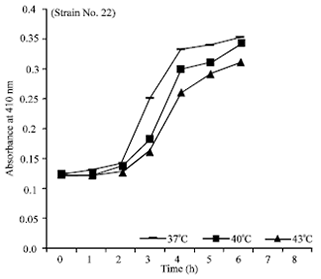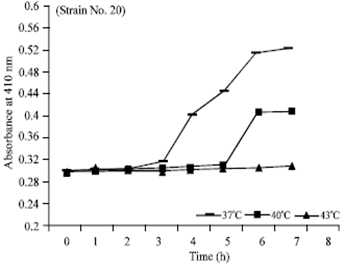Did you know that bacteria make cheese so special?
Cheese is a rich source of protein, especially calcium. Daily consumption of cheese has a positive effect on the preservation of tooth enamel and protects teeth from caries.



Keep the milk in the middle of the refrigerator, not on its door. We often open doors, causing the food to heat up, which can lead to its spoilage.
There are more than 2,000 types of cheese in the world


Production of cheese from milk is a great example of preserving milk and getting a tasty and healthy product based on fermentation with lactic acid bacteria. Lactic acid bacteria are bacteria that are already naturally present in raw milk.
The first records of cheese were found in the cradle of civilization, the "fertile crescent" located between the rivers Euphrates and Tigris, dating between 7000-6000 BC. Archaeological research has found that the cheese was made from sheep's and goat's milk. Sheep and goats were the first animals to be domesticated as a source of meat and milk. This was later followed by animals like cows and donkeys.
These are warm places where the fermentation of milk is likely to have occurred spontaneously because the bacteria growth and the production of lactic acid caused the coagulation of milk in the skin sack (storage of milk made of the animal stomach) and the formation of cheese curd and whey. Cheese curd is a solid made up of proteins and fats, while whey is a liquid that is left behind after cheese production, consisting of water and water-soluble milk constituents.
Cheese production
With the introduction of lactic acid bacteria as a starter culture it makes it possible to control the cheese production process as opposed to traditionally produced cheeses by spontaneous fermentation with naturally occurring lactic acid bacteria. This requires extensive experience and careful monitoring of the production process to avoid contamination of the product with undesirable microorganisms.
Depending on the type of cheese, different cultures of lactic acid bacteria are used. The most commonly added are lactic acid bacteria from the genera Lactococcus and Lactobacillus. Bacteria of the genus Lactococcus are responsible for the formation of lactic acid and subsequently for the aroma of the components formed by the action of their enzymes on the proteins and milk fat. The formed lactic acid lowers the pH of the milk, which causes the casein hydrolysis and the formation of cheese curd. Bacteria of the genus Lactobacillus produce compounds that affect the texture and aroma of the finished product. These bacteria help us obtain the desired properties of cheese such as taste, smell and consistency.

Lactococcus

Lactobacillus
The United States is the largest cheese producer in the world, but the most cheese per capita is eaten in France - an average of 26.3 kg of cheese per year.
Starter culture
Preparations containing live microorganisms, used to produce various fermented foods to enrich the food with different products of metabolism.

According to the UK Center for Retail Research survey, the most commonly stolen food is cheese. According to their data, 4% of annually produced cheese is stolen.

The holes in cheese were not made by a mouse, but by bacteria. Special types of cheeses contain holes that result from gas bubbles produced by certain types of bacteria. Propionic bacteria produce carbon dioxide that remains trapped in cheese during ripening, thus producing characteristic holes.
Find out more in video.Source - author: youtube.com - It’s AumSum Time

An example of the proteolytic activity of bacteria - the clear zone indicates the breakdown of the casein, i.e. the major milk protein, to smaller peptides, whereby the taste, smell and consistency of milk are altered during the production of fermented dairy products. Proteolysis is degradation of protein molecules into smaller polypeptides or amino acids and is very important in cheese production.

How do we make cheese?
Find out!








Turophobia is the fear of cheese.
Lactococcus lactis subsp. lactis
Ultimate metabolites: Lactic acid
Effects of metabolites: Clots milk. Lowers the pH, thus preventing the growth of unwanted microorganisms
Lactococcus lactis subsp. cremoris
Ultimate metabolites: Lactic acid, diacetyl, bacteriocins
Effects of metabolites: Diacetyl gives the aroma to the cheese and bacteriocins prolong life and prevent food spoilage
Lactococcus lactis subsp. biovar diacetylactis
Ultimate metabolites: Lactic acid, diacetyl, acetoin, 2,3 butanediol, acetic acid, carbon dioxide, bacteriocins
Effects of metabolites: Clotting, giving aroma to cheese. Acetic acid acts as a coagulant (clotting agent) and carbon dioxide creates holes in the cheese
Leuconostoc mesenteroides subsp. cremoris
Ultimate metabolites: Lactic acid, ethanol, acetate, carbon dioxide, acetaldehyde, dextran, mannitol
Effects of metabolites: Clotting, getting a special smell. Ethanol promotes the formation of esters that contribute to the aroma
Need money? Pawn the cheese!
Italian bank Credito Emiliano, besides money, accepts wheels of cheese as collateral for loans. That traditional Parmesan cheese is officially known as Parmigiano Reggiano. Such cheese matures 18-36 months and can be worth several thousand dollars. The bank has a warehouse for many cheese wheels with customized humidity and temperature for necessary ripening.

Do mice really like cheese?
Don't believe cartoons, mice aren't that crazy about cheese. If there is an option, they opt for carbohydrates and sweets, and they only eat cheese when they have nothing else to eat.

Cheese rolling
Near the town of Gloucester in England, there is a cheese race on the steep slope of Cooper's Hill. A wheel of cheese weighing about 3.5 kg rolls down a steep slope and competitors run after it and try to catch it. As the cheese reaches speeds of over 100 km/h, the whole race is quite dangerous and often ends with numerous injuries.












